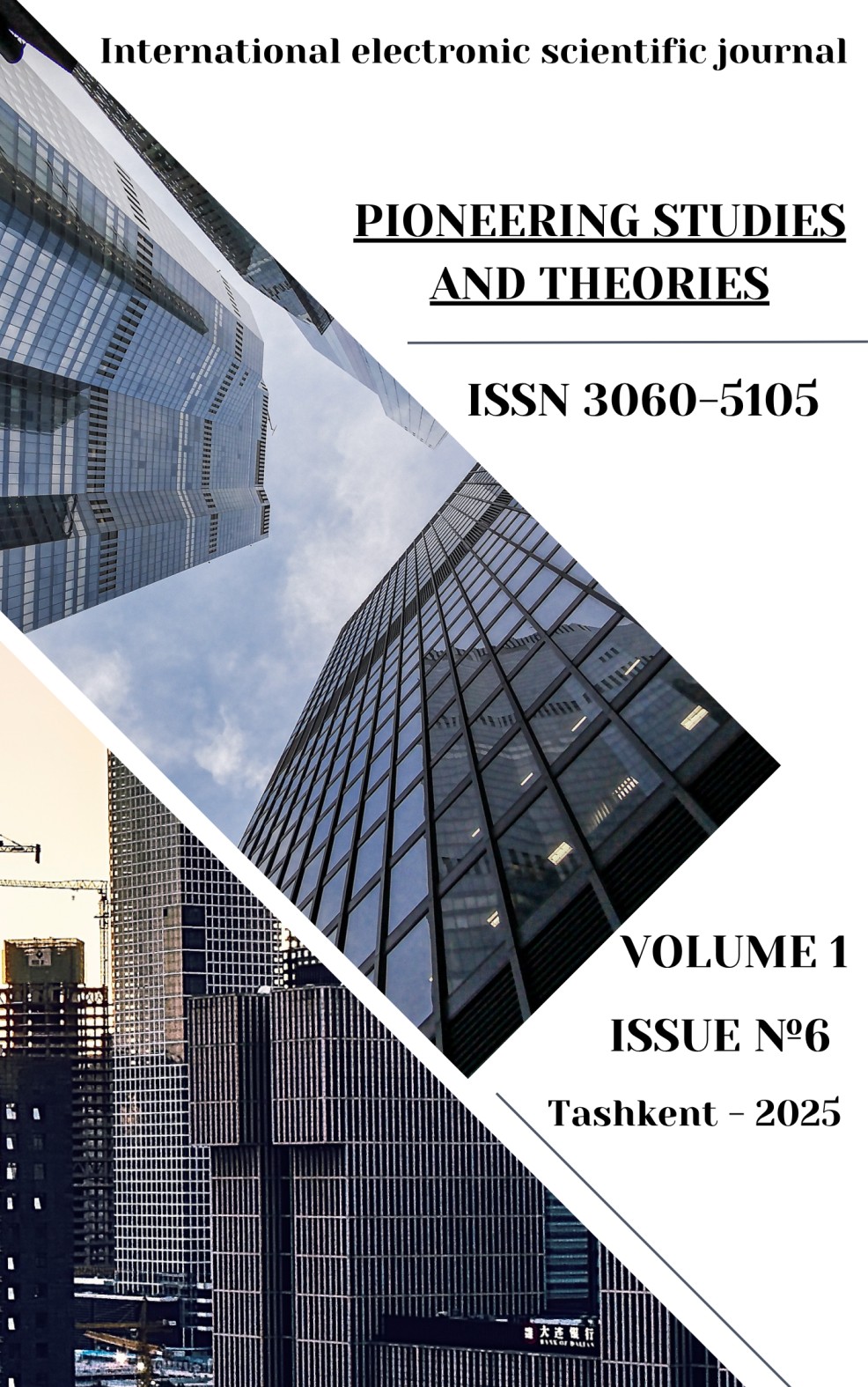SPATIO-TEMPORAL TRAFFIC CONGESTION FORECASTING IN TASHKENT CITY USING A CNN-LSTM DEEP LEARNING MODEL BASED ON GOOGLE MAPS AND WEATHER DATA
Keywords:
Traffic forecasting, Spatio-temporal modeling, CNN-LSTM, Deep learning, Tashkent, Google Maps API, OpenWeatherMap, Traffic congestion prediction, Urban mobility, Intelligent transportation systemsAbstract
Traffic congestion remains a significant challenge in rapidly urbanizing cities like Tashkent, where increasing vehicle usage strains existing infrastructure. This paper presents a spatiotemporal traffic forecasting framework based on a hybrid deep learning model combining Convolutional Neural Networks (CNN) and Long Short-Term Memory (LSTM) networks. The model leverages real-time traffic data collected from Google Maps and hourly weather data from OpenWeatherMap to predict short-term congestion levels across key urban road segments. By capturing both spatial patterns and temporal dependencies, the CNN-LSTM model effectively accounts for dynamic conditions such as time of day, weather variability, and traffic flow trends. Experimental results demonstrate that the proposed model achieves high prediction accuracy, with low mean absolute error and strong generalization across different conditions. This research contributes a practical and scalable approach to intelligent traffic management and urban mobility planning in Tashkent and similar cities.
References
1. O‘zbekiston Respublikasi IIV YHXBB (2024). Toshkent shahrida transport vositalari soni bo‘yicha rasmiy statistikalar. https://yhhxd.uz
2. Davlat statistika qo‘mitasi (2024). Avtotransport vositalarining soni va egalik tarkibi. https://stat.uz
3. Kun.uz (2024, 2-fevral). O‘zbekistonda jismoniy shaxslarga tegishli avtomobillar soni 4 milliondan oshdi. https://kun.uz/news/2024/02/02/
4. Tashkent City Public Transport Report (2023). Annual metro and bus ridership statistics.
5. Gazeta.uz (2023). Toshkentda jamoat transportiga ishonch past: tirbandlik eng katta muammo. https://www.gazeta.uz/oz/2023/05/30/transport/
6. Toshkent hokimiyati (2023). Transport sohasidagi ijtimoiy so‘rovlar yakunlari. https://tashkent.uz
7. Lv, Y., Duan, Y., Kang, W., Li, Z., & Wang, F. (2015). Traffic Flow Prediction With Big Data: A Deep Learning Approach. IEEE Transactions on Intelligent Transportation Systems, 16(2), 865–873. https://doi.org/10.1109/TITS.2014.2345663
8. Ma, X., Tao, Z., Wang, Y., Yu, H., & Wang, Y. (2017). Long short-term memory neural network for traffic speed prediction using remote microwave sensor data. Transportation Research Part C: Emerging Technologies, 54, 187–197. https://doi.org/10.1016/j.trc.2015.03.014
9. Zhang, J., Zheng, Y., & Qi, D. (2017). Deep spatio-temporal residual networks for citywide crowd flows prediction. In Proceedings of the AAAI Conference on Artificial Intelligence, 31(1). https://ojs.aaai.org/index.php/AAAI/article/view/10899
10. Tashkent Traffic Department (2023). Urban congestion monitoring annual report.
11. Kashyap, A., Raviraj, S., Devarakonda, A., Nayak, S. R., & Bhat, S. J. (2021). Traffic flow prediction models – A review of deep learning techniques. Cogent Engineering, 8(1), 1–17. https://doi.org/10.1080/23311916.2021.1951247
12. Xu, X., Liu, C., Zhao, Y., Yu, X., & Wu, X. (2021). Short-term traffic volume forecast method based on CNN-LSTM-AT. Preprint on ResearchGate. https://www.researchgate.net/publication/354644631
13. Yu, B., Yin, H., & Zhu, Z. (2018). Spatio-temporal graph convolutional networks: A deep learning framework for traffic forecasting. In Proceedings of the 27th International Joint Conference on Artificial Intelligence (IJCAI). https://doi.org/10.24963/ijcai.2018/505
14. Zhao, L., Song, Y., Zhang, C., Liu, Y., Wang, P., Lin, T., & Li, M. (2019). T-GCN: A temporal graph convolutional network for traffic prediction. IEEE Transactions on Intelligent Transportation Systems, 21(9), 3848–3858. https://doi.org/10.1109/TITS.2019.2892761
15. Zhao, H., Chen, Q., Liu, Y., & Zhang, J. (2021). STDConvLSTM: Spatial-temporal dynamic convolutional LSTM for traffic flow prediction. Preprint on ResearchGate. https://www.researchgate.net/publication/355289107
16. Saha, S., Das, S., & Carvalho, G. H. S. (2024). A novel CNN-GRU-LSTM based deep learning model for accurate traffic prediction. Journal of Transportation Technologies, 14(2), 100–112. https://doi.org/10.4236/jtts.2024.142007
17. Singh, K., & Sharma, M. (2024). Hybrid deep learning architectures for traffic forecasting: A comparative study. International Journal of Data Science and Analytics, 12(1), 45–59. https://doi.org/10.1007/s41060-024-00345-z
18. Lim, B., Arik, S. O., Loeff, N., & Pfister, T. (2021). Temporal Fusion Transformers for interpretable multi-horizon time series forecasting. International Journal of Forecasting, 37(4), 1748–1764. https://doi.org/10.1016/j.ijforecast.2021.03.012
19. Alpamis Kutlimuratov, Jamshid Khamzaev, Temur Kuchkorov, Muhammad Shahid Anwar, Ahyoung Choi. “Applying Enhanced Real-Time Monitoring and Counting Method for Effective Traffic Management in Tashkent”. Sensors 23 (11), 5007 .
20. Temurbek Kuchkorov, Jamshid Khamzaev, Zamira Allamuratova, Temur Ochilov. “Traffic and road sign recognition using deep convolutional neural network”. 2021 International Conference on Information Science and Communications Technologies (ICISCT).
21. T.A. Kuchkorov, J.F. Hamzayev, T.D. Ochilov. “Intellektual transport tizimi ilovalari uchun sunʼiy intellekt texnologiyalaridan foydalanish”. Вестник КГУ им. Бердаха. № 2, Страницы-102. 2021.







